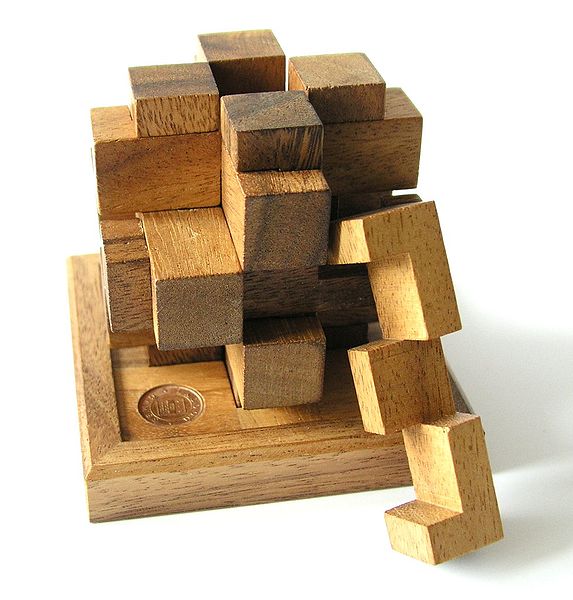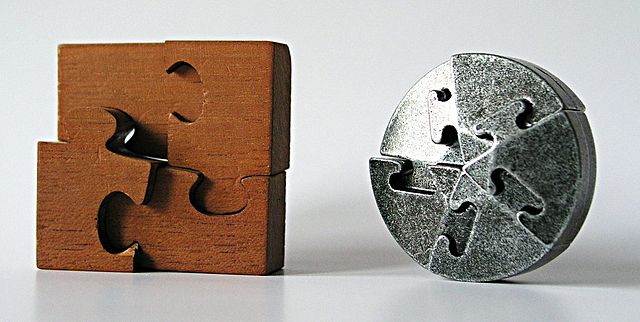The Skewb is a combination puzzle and a mechanical puzzle in the style of the Rubik's Cube. It was invented by Tony Durham and marketed by Uwe Mèffert. Although it is cubical, it differs from the typical cubes' construction; its axes of rotation pass through the corners of the cube, rather than the centers of the faces. There are four axes, one for each space diagonal of the cube. As a result, it is a deep-cut puzzle in which each twist affects all six faces.
The Skewb in solved state
A mechanical puzzle is a puzzle presented as a set of mechanically interlinked pieces in which the solution is to manipulate the whole object or parts of it. While puzzles of this type have been in use by humanity as early as the 3rd century BC, one of the most well-known mechanical puzzles of modern day is the Rubik's Cube, invented by the Hungarian architect Ernő Rubik in 1974. The puzzles are typically designed for a single player, where the goal is for the player to discover the principle of the object, rather than accidentally coming up with the right solution through trial and error. With this in mind, they are often used as an intelligence test or in problem solving training.
Mechanical puzzle design by W. Altekruse, patented in 1890. The puzzle consists of twelve identical pieces which must be fitted together.
Hoffman's packing puzzle
Disassembly puzzles
The Chinese wood knot, a notorious interlocking puzzle. In this particular version designed by Bill Cutler, five moves are needed before the first piece can be removed.





